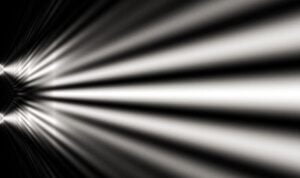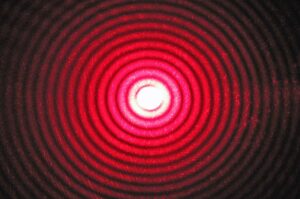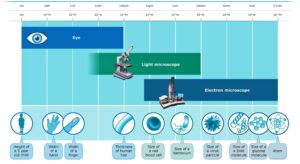Polarisation of Light :-

polarisation of light is the property of transverse wave that can oscillate with more than one orientation. A light wave that is vibrating in more than one plane is referred to as unpolarised light.
The process of transforming unpolarised light into polarised light is known as polarisation of light.
If the non polarised light from an ordinary Source passes through a polaroid sheet P₁ . It is observed that its intensity is reduced by half, Rotating P₁ has no effect on the transmitted beam.
Let an identical piece of polaroid P₂ be placed after P₁. As expected, the light from the sheet is reduced in intensity on passing through P₁ alone. But now rotating P₂ has a dramatic effect on the light coming from P₁.
In one position, the intensity transmitted by P₁ followed by P₂ is nearly zero. When terned by 90⁰ from this position P₂ transmits nearly the full intensity emerging from P₁.
The above experiment can be easily understood by assuming that light passing through the polaroid P₁ gets polarised along the axis.
Malus Law :-
When two similar Polaroids (P₁ and P₂)are placed parallel to each other and rotate the polaroid P₁ or P₂ , the Intensity will vary as
I = I₀ cos²θ
Where I₀ is the intensity of polarised light after passing through P₁ and θ is the angle between P₁ and P₂ , this is known as Malus Law.
Brewster’s Law :-

when unpolarised light is incident on the boundary between two transparent media (air and water), the reflected light is polarised with its electrical vector perpendicular to the plane of incidence when the refracted and reflected rays make the right angle (π/2) with each other.
Thus we have seen that when reflected wave is perpendicular to the refracted wave, the reflected wave is a totally polarised wave.
The angle if incidence in this case is called Brewster,s angle or angle of polarisation and is denoted by ip. It is related to the refractive index of the denser medium.

This is known as Brewster’s law
I. e When unpolarised light is incident upon the surface of a transparent medium it experiences maximum plane polarisation at the angle of incidence whose tangent is equal to the refractive index of the medium.
QUESTION – Unpolarised light is incident on a plane glass surface, What should be the angle of incidence so that the reflected and refracted rays are perpendicular to each other ?
Solution –
i + r = π/2
We should have tan ip = μ = 1·5
This gives ip = 57⁰
This is the Brewster’s angle for air to glass interface.
Polarisation of Light by Scattering :-

When an unpolarised ray of light travels through a medium, it undergoes scattering. the medium is composed of large number of atoms and ray of light contains number of light photons. When a light ray strikes the atoms in the medium, they transfer their energy to the atoms as a results, the electrons in the atoms are set vibration. These vibrating electrons emits electromagnetic radiation in all direction.
- The radiation emitted by them will have the same frequency as the incidence radiation. This mechanism keeps propagating through the medium. The absorption and reemission of light radiation cause scattering of light in the medium.
- The scattering of light by molecules was intensively investigated by C. V. Raman. He was awarded the Nobel prize for physics in 1930 for this work.





